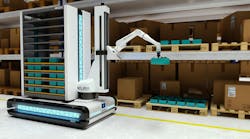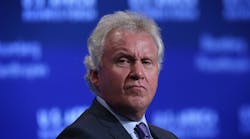At General Electric Co.'s 2017 outlook event this month, CEO Jeff Immelt was asked how he can get investors to appreciate the company's new digital transformation and 3D printing investments. His response: It "makes a shitload more sense than Six Sigma did."
It was a telling quip. The popularization of Six Sigma -- a numbers-driven business-management strategy -- is one of the more enduring legacies of Immelt's predecessor, Jack Welch, a man whose shadow at times loomed large well after he was gone. But as Immelt completes his 15th year as CEO, it's his impact, not Welch's, that's in the spotlight. Will he be remembered for his plan to turn GE into a digital powerhouse -- the latest and perhaps boldest of his cultural and operating overhauls -- or for the laggard stock that's undermined his efforts?
Immelt's remodeling efforts were on full display at the December outlook event. This has largely been a story of simplification of late. The biggest example is the divestiture of the bulk of GE Capital, a lending and real estate behemoth largely built by Welch that nearly strangled the company during the financial crisis. Immelt's pruning efforts have also targeted legacy businesses (appliances), Welch's other efforts to diversify (insurance, NBC Universal) and even some divisions of his own making, exhibit A being the water unit GE recently put up for sale.
Immelt built the division through a series of acquisitions and the technologies are good, but trying to push a mishmash of chemical and membrane-based solutions through the same salesforce just didn't work, says RBC analyst Deane Dray. Much like the fire-alarm and security business Immelt cobbled together in the early 2000s, the water unit got lost in the giant company.
GE had considered exiting it for awhile; it's now worried that antitrust regulators would take issue with the unit when reviewing the combination of its energy operations with Baker Hughes Inc. Dray says the water division should fetch around 12 times its 2016 Ebitda, or about $3.5 billion. The company paid an average of about 13 times Ebitda for its biggest water acquisitions, he estimates.
GE's CEO has drawn criticism for overpaying for deals that ultimately didn't pay off -- and a lot of his earlier acquisitions were expensive. He's sometimes been slower to act than investors would have liked, but at least Immelt has eventually been willing to admit when he's miscalculated and get out of businesses that don't fit. Not all CEOs have the awareness to do that.
The recently inked Baker Hughes agreement is also a backtracking of sorts from the billions of dollars of oil and gas acquisitions that came back to bite Immelt as prices plunged. The combination fills holes in GE's portfolio and is a smart bet that the future of oilfield services lies in data-driven efficiency. But structuring the deal as a partnership rather than an outright acquisition leaves the door open for an eventual spinoff of the "new Baker Hughes" and strikes me as a tacit acknowledgement of investors' frustration with the pricey deals of the past.
With few portfolio changes left to make (GE is also selling its $3 billion-in-revenue electrical-distribution business), the focus turns to actually executing on that digital industrial identity that Immelt has been preaching about. He built up the industrial part with the $10.6 billion purchase of Alstom SA's power assets last year. A risky overture ridden with government hurdles, that takeover has blossomed into a victory with better synergies and earnings accretion than initially estimated.
On the digital side, GE agreed to buy two 3D printing companies this year for a combined $1.3 billion. Those didn't come cheap, but the opportunity is massive. GE has estimated it can sell $1 billion worth of additive metal manufacturing technology by 2020, while using the 3D printers to drive its own costs down by as much as $5 billion. Immelt is right; that investment does make a lot more sense than Six Sigma.
Investors are less sold on GE's Predix platform, an industrial-focused operating system akin to Android that the company wants to sell as a service to its peers. The idea is to plug data collected via sensors into applications that can help companies increase productivity. But the cost-cutting opportunities within GE are more tangible in the near term than the promised sales growth. Can GE really compete with the likes of Oracle Corp. and Salesforce.com Inc.? Maybe.
With industrial productivity gains slowing, digital efficiencies can make up the difference and Immelt deserves credit for being an early mover. At worst, he's set up GE to be a more profitable and competitive company, while discarding distracting and underperforming businesses. That's a pretty good legacy. The question is whether investors will in fact appreciate it while he's still in charge. Trotting out ambitious sales guidance two years in a row didn't do much to endear him. But if he can actually deliver, he may yet get GE's stock back to where it was in Welch's final days.
Only about $8 to go...
This column does not necessarily reflect the opinion of Bloomberg LP and its owners.










